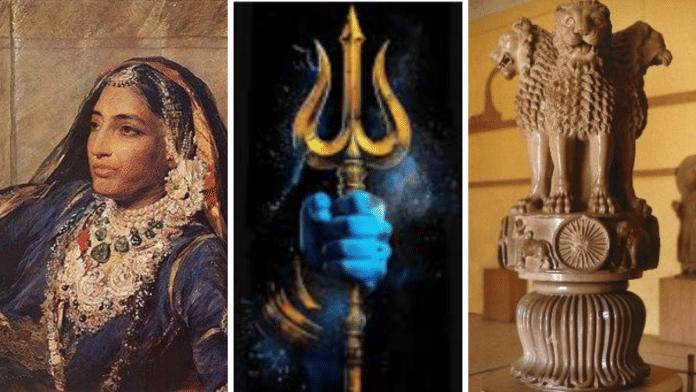Thank you dear subscribers, we are overwhelmed with your response.
Your Turn is a unique section from ThePrint featuring points of view from its subscribers. If you are a subscriber, have a point of view, please send it to us. If not, do subscribe here: https://theprint.in/subscribe/
The historical and cultural connections between India and Iraq present a rich tapestry of religious tolerance, cultural exchange, and the interconnectedness of human symbols and traditions. This article explores these themes through the journey of Guru Nanak to Baghdad, the refuge provided by the Sikh Empire to Persian Jewish exiles, the linguistic gift of the Romani language, and the synthesis of religious symbols.
Guru Nanak’s Journey to Baghdad and the Legacy of Religious Tolerance
Guru Nanak, the founder of Sikhism, was born Hindu, and had embarked on extensive travels, known as Udasis, to spread his message of Ek Onkar, the oneness of God. His second Udasi included a significant visit to Baghdad, where he sought to engage with diverse religious scholars and promote spiritual unity beyond dogma and ritual. In Baghdad, Guru Nanak met Pir Bahlol, a revered Sufi saint. Their discourse bridged religious philosophies, emphasizing the omnipresence of the Divine and the futility of sectarian divisions. This meeting is commemorated by a shrine in Baghdad, symbolizing the lasting impact of Guru Nanak’s teachings in the region.
Centuries later, the Sikh Empire, under Maharaja Ranjit Singh, provided refuge to Persian Jewish exiles during a time of political upheaval. The welcoming of these exiles exemplified religious tolerance and the universal Sikh principle of recognizing the human race as one. The exiles contributed to the world’s linguistic diversity, with the Romani language, which has roots in Sanskrit, being a notable legacy.
The Linguistic Gift of the Exiles: The Romani Language
The Iranian Jewish, Parsi, and Zoroastrian exiles who settled in Rawalpindi, Punjab (now Pakistan) brought with them a rich cultural and linguistic heritage. The Romani language, spoken in Europe since the Middle Ages, encapsulates the journey and resilience of these exiled communities. The use of the word ‘Trishul’ in Romani for the Christian cross reflects the syncretic evolution of language and the interplay of different cultures and beliefs.
Symbols and Their Interconnectedness
The Trishul, Khanda, and Christian cross are three religious symbols that, while originating from distinct traditions, share common themes and elements.
- The Trishul: This Hindu symbol represents Lord Shiva’s trident and symbolizes creation, maintenance, and destruction, as well as various trinities in Hinduism.
- The Khanda: The emblem of Sikhism, featuring a central double-edged sword (Khanda), a circle (chakkar), and two single-edged swords (kirpans), symbolizes divine knowledge, perfection of God, and the balance of spiritual and temporal realms.
- The Christian Cross: A symbol of Jesus Christ’s crucifixion and Christian faith, representing sacrifice, redemption, and hope of resurrection.
The synthesis of these symbols highlights shared human quests for meaning and divine connection. Each symbol originates from distinct religious traditions but shares themes like triadic elements, moral and ethical guidance, and a divine connection. The adoption of the Trishul to represent the Christian cross in the Romani language exemplifies cultural syncretism.
The Assyrian Artifact and Ashoka’s Chakra
A notable cultural overlap is a stone bas-relief from Nimrud, Iraq, featuring an eight-spoked wheel similar to Ashoka’s Chakra, symbolizing the Dharmachakra in Indian culture. While visually alike, a direct connection is speculative. Such wheel symbols often denote cosmic order and divine law across ancient cultures. The Ashoka Chakra, on India’s flag, has 24 spokes, symbolizing 24 principles of Dharma (moral law). Mathematically, it’s intriguing that the square of any prime number greater than 3 results in a number that is 1 more than a multiple of 24.
Conclusion: A Legacy of Tolerance and Syncretism
The historical episodes of Guru Nanak’s visit to Baghdad and the Sikh Empire’s sheltering of Jewish exiles exemplify religious tolerance and the spirit of cooperation. The linguistic legacy left by the exiles in Rawalpindi, with the Romani language’s Sanskrit connections and its unique adoption of symbols, reminds us of the interconnectedness of human cultures. These narratives encourage us to look beyond present divisions and seek inspiration from past examples of tolerance and syncretism, promoting a harmonious future.
The journey of Guru Nanak and the refuge provided by the Sikh Empire highlight the power of compassion and the enduring impact of cultural exchange. These stories urge us to embrace diversity and foster a world where every individual, regardless of their faith, can find a place to call home. The synthesis of symbols and the shared linguistic heritage underscore the profound interconnectedness of human societies, urging us to recognize and celebrate our common humanity.
These pieces are being published as they have been received – they have not been edited/fact-checked by ThePrint


